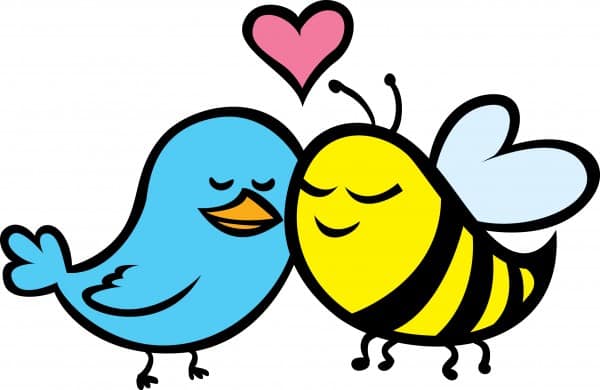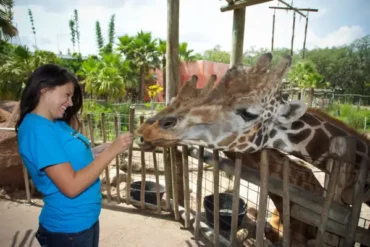“`html
Talking to Your Kids About the Birds and the Bees: A Parent’s Guide
Hey there, super parents! Are you pondering how to begin that oh-so-important chat about the birds and the bees with your little ones? Fear not, because this guide is here to sprinkle some sunshine on a topic that might seem as thorny as a rosebush!
Understanding the Basics: Why It’s Essential
Before we dive into the talk, let’s set the stage. The ‘birds and the bees’ is a delicate euphemism that’s danced through the ages and simply refers to educating kids about reproduction and relationships. It’s a fundamental part of helping them blossom into well-informed, respectful adults.
Key Takeaways:
- The ‘birds and the bees’ talk is not just one conversation, it’s an ongoing dialogue as your child grows.
- It’s fundamental for kids to understand their bodies, as well as the emotional aspects of relationships.
- Embrace each question as an opportunity to build trust and openness between you and your kiddo.
When to Start the Conversation
Timing is everything, just like the perfect baking moment for a batch of cookies! Too early, and the cookies are doughy; too late, and they’re burnt! The same goes for this chat. Read the room and look out for signs that your kid might be ready to learn about the birds and the bees. Don’t worry if they seem curiously young – if they’re asking questions, they’re ready for answers!
Signs Your Child Might Be Ready:
- They’re asking where babies come from.
- Their friends might be talking about ‘boyfriends’ or ‘girlfriends’.
- They’re noticing differences between boys and girls.
Preparing for ‘The Talk’
Like any epic adventure, some preparation is key. Gather your thoughts, consider your child’s maturity level, and remember, honesty is your best friend. By being open and straightforward, you’ll set the stage for a trusting relationship where your child feels comfortable coming to you with anything, be it butterflies or bees.
How to Prepare:
- Brush up on the facts. Kids have a knack for asking the stumper questions!
- Consider your personal and family values, as these will guide your conversation.
- Be mentally prepared for a range of reactions—curiosity, embarrassment, giggles, it’s all normal.
Fostering an Open Environment
Creating a cozy nook of trust is crucial. Your child should feel like the family home is a safe zone for all types of queries. This sense of security will make discussing sensitive topics less daunting. Plus, it’ll help keep their ears open and their nervous giggles (mostly) at bay!
The perfect environment does not mean making every conversation super serious. Sometimes, using humor and storytelling can be a great strategy to keep things light-hearted. And remember, a bit of blush is okay; it’s a sign of a healthy, respectful discussion about life’s dazzling diversity.
“`

Talking to Your Kids About the Birds and the Bees: A Parent’s Guide
Hey there, super parents! Are you pondering how to begin that oh-so-important chat about the birds and the bees with your little ones? Fear not, because this guide is here to sprinkle some sunshine on a topic that might seem as thorny as a rosebush!
Understanding the Basics: Why It’s Essential
Before we dive into the talk, let’s set the stage. The ‘birds and the bees’ is a delicate euphemism that’s danced through the ages and simply refers to educating kids about reproduction and relationships. It’s a fundamental part of helping them blossom into well-informed, respectful adults.
Key Takeaways:
The ‘birds and the bees’ talk is not just one conversation, it’s an ongoing dialogue as your child grows.
It’s fundamental for kids to understand their bodies, as well as the emotional aspects of relationships.
Embrace each question as an opportunity to build trust and openness between you and your kiddo.
When to Start the Conversation
Timing is everything, just like the perfect baking moment for a batch of cookies! Too early, and the cookies are doughy; too late, and they’re burnt! The same goes for this chat. Read the room and look out for signs that your kid might be ready to learn about the birds and the bees. Don’t worry if they seem curiously young – if they’re asking questions, they’re ready for answers!
Signs Your Child Might Be Ready:
They’re asking where babies come from.
Their friends might be talking about ‘boyfriends’ or ‘girlfriends’.
They’re noticing differences between boys and girls.
Preparing for ‘The Talk’
Like any epic adventure, some preparation is key. Gather your thoughts, consider your child’s maturity level, and remember, honesty is your best friend. By being open and straightforward, you’ll set the stage for a trusting relationship where your child feels comfortable coming to you with anything, be it butterflies or bees.
How to Prepare:
Brush up on the facts. Kids have a knack for asking the stumper questions!
Consider your personal and family values, as these will guide your conversation.
Be mentally prepared for a range of reactions—curiosity, embarrassment, giggles, it’s all normal.
Fostering an Open Environment
Creating a cozy nook of trust is crucial. Your child should feel like the family home is a safe zone for all types of queries. This sense of security will make discussing sensitive topics less daunting. Plus, it’ll help keep their ears open and their nervous giggles (mostly) at bay!
The perfect environment does not mean making every conversation super serious. Sometimes, using humor and storytelling can be a great strategy to keep things light-hearted. And remember, a bit of blush is okay; it’s a sign of a healthy, respectful discussion about life’s dazzling diversity.
See more great Things to Do with Kids in New Zealand here. For more information see here
Disclaimer
The articles available via our website provide general information only and we strongly urge readers to exercise caution and conduct their own thorough research and fact-checking. The information presented should not be taken as absolute truth, and, to the maximum extent permitted by law, we will not be held liable for any inaccuracies or errors in the content. It is essential for individuals to independently verify and validate the information before making any decisions or taking any actions based on the articles.




